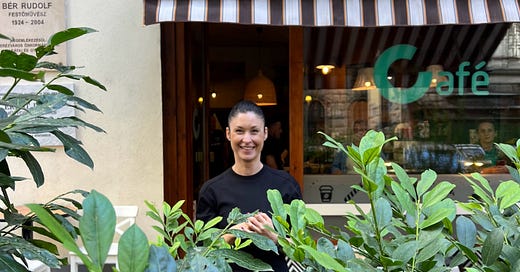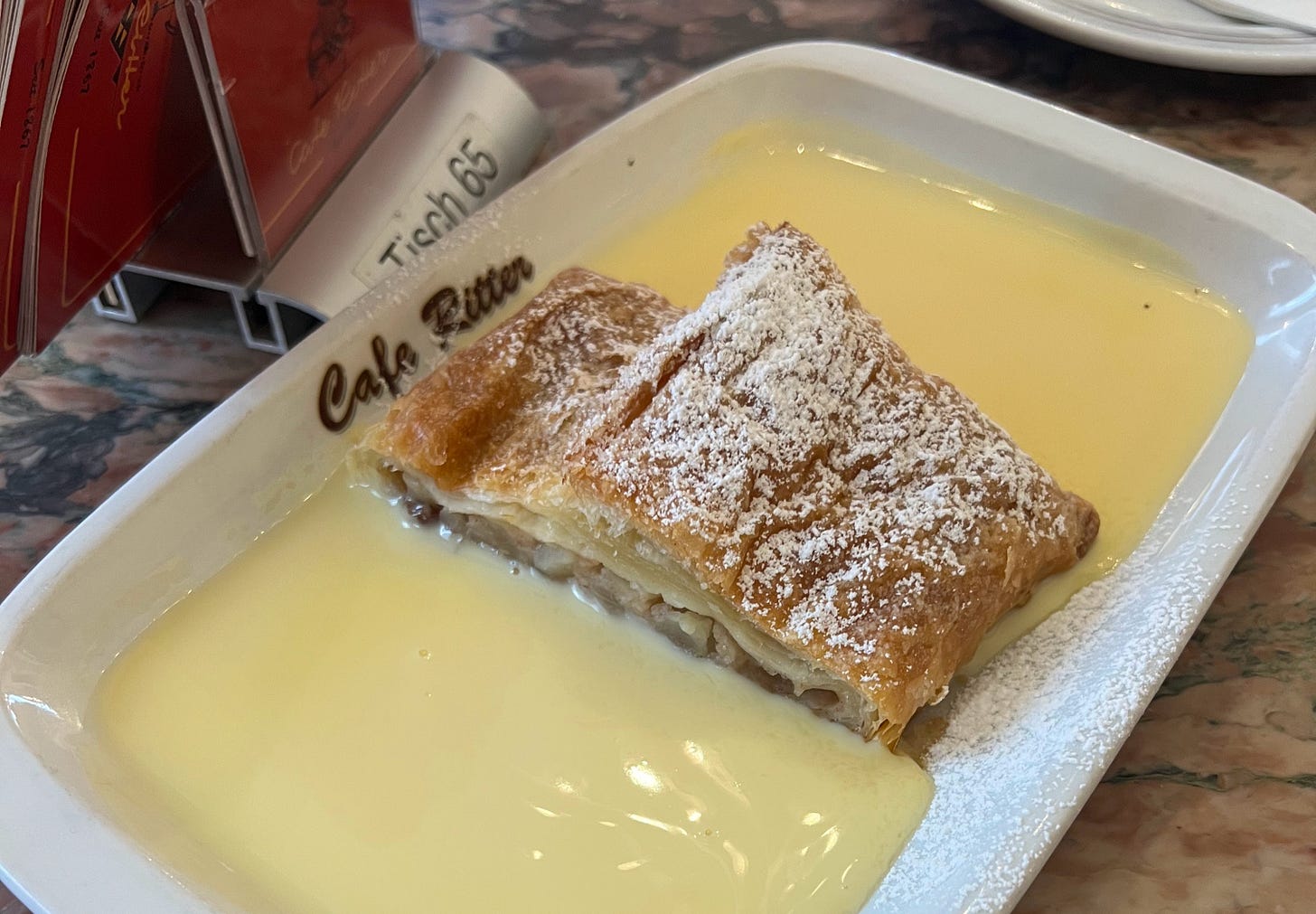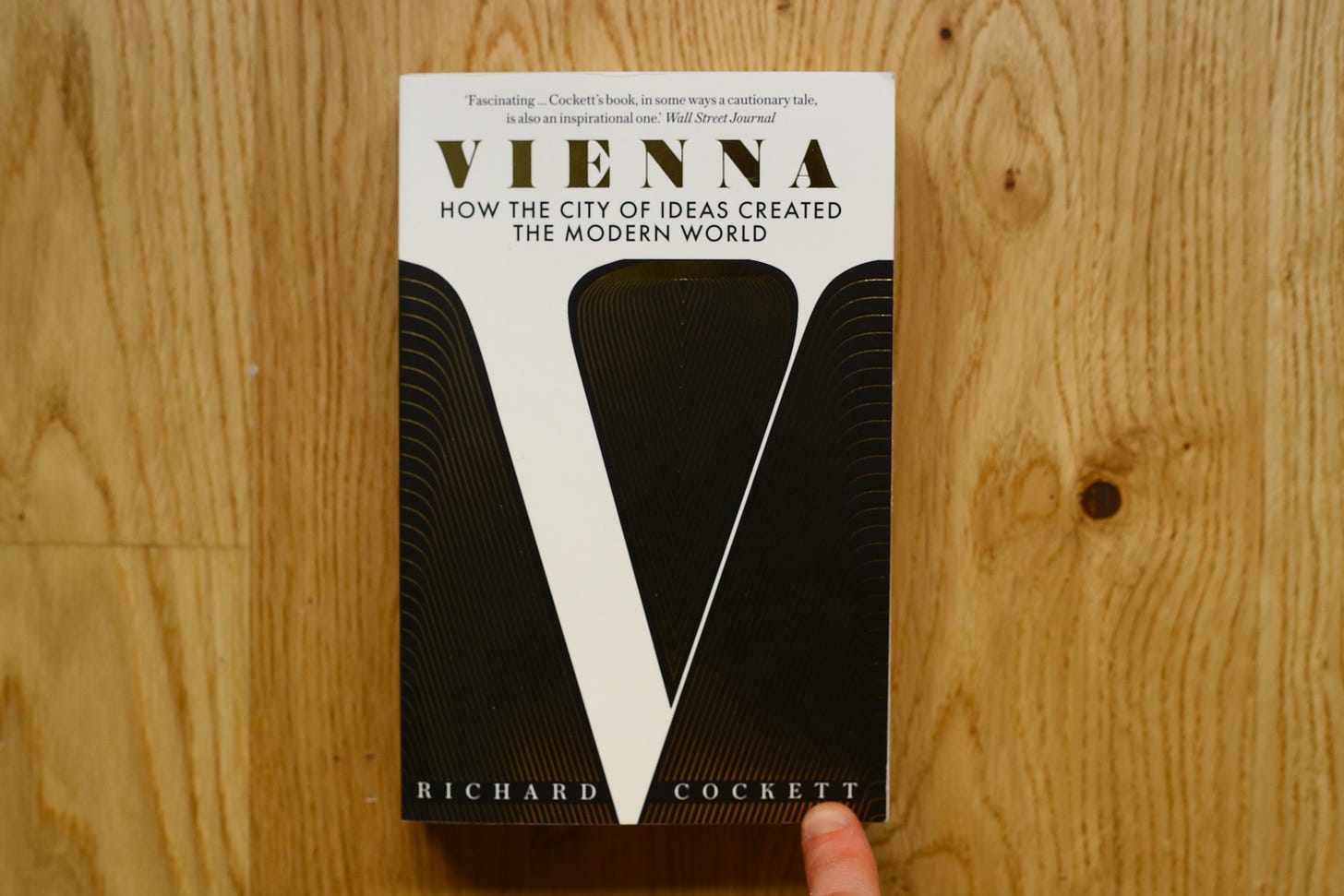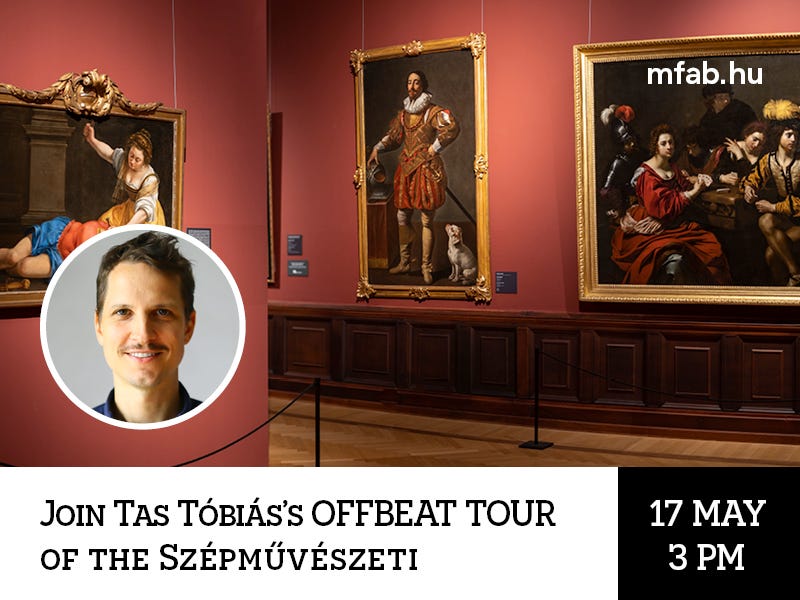Before the pandemic, I wrote a weekly events roundup which I’m now reviving because plenty is going on in Budapest and Vienna. The format will be somewhat different this time.
Every week, I’ll recommend five or so things here on Substack. They might be museum shows, restaurants, bars, concerts, books, lectures – stuff I’m excited about. Some in Budapest, others in Vienna. You can read below my selections for the current week.
This content will appear only here and some of it behind a paywall (my website, Offbeat, remains free). I know. Who needs yet another subscription… But I hope you’ll give it a chance and that my suggestions will make your time in the twin cities all the more enjoyable.
Yours,
Tas Tóbiás
1. A Budapest coffee shop recommendation: We all have our neighborhood cafes; in Budapest, I often start the day at the Robert Capa Cafe on Nagymező utca. The cafe’s perennially cheerful owner is Zsóka with whom I share an admiration for Zala county in western Hungary (Zsóka comes from a Zala village which is near another Zala village where I spend the summers). During All Saints' Day, Zsóka sends me heart-wrenchingly beautiful photos from the local cemetery – the lonely church tower rising from a sea of flickering candles.
Zsóka is usually accompanied by a couple of admirably loquacious students behind the counter. They’re the opposite of the self-important barista type, and they will not raise an eyebrow if you ask for dark-roasted coffee. In fact, they only serve dark-roasted coffee here, because that is what Zsóka likes. I told her that her logic defies the rules of the marketplace, but she doesn’t seem to mind. Anyway, life is happening here.
Zsóka and her crew share the building with the Robert Capa Photography Museum, which houses a wonderful permanent exhibition of Capa’s photography alongside high-quality temporary shows (Capa, who was a famous war photographer, grew up in Budapest).
2. A Vienna coffee shop recommendation: You don’t need me to tell you that Vienna has a wonderful coffeehouse culture. It’s a small miracle that so many of the historic establishments – high ceilings, elegant interiors, newspapers laid out on a stick etc. – have survived to the present day. Not just survived: they’re thriving. I have speculated about the roots of this phenomenon and, like most things in Vienna, I think it might have to do with the Habsburg family and its traditionalist values.
My go-to is Cafe Ritter in District 6, which may be the last coffeehouse in Vienna with what the author Paul Hoffman called “positively obsequious” service. Much has been written about the unwritten code of waiter-customer dynamics in Vienna and Cafe Ritter is a textbook example (rule #1: don’t wait to be seated). Please don’t miss the goulash soup and the apple strudel drenched in vanilla sauce.
3. Two shows at the Albertina: After the Kunsthistorisches and the Belvedere, the Albertina is Vienna’s most visited museum. If you’ve been, chances are that you were witness to a bombastic solo show of a household name such as Roy Lichtenstein or Jean-Michel Basquiat. This may be a thing of the past. The Albertina’s new Director, Ralph Gleis, who started out on January 1st, announced he wants to explore new paths after the 25-year-reign of his predecessor, Klaus Albrecht Schröder.
One of those new paths is an old path: a return to the museum’s original ethos, which focused on the drawings and prints that the 18th-century art lover, Duke Albert of Saxen-Teschen, purchased after he married into the Habsburg family (the museum is named after him). It is in this spirit that the current temporary show, Leonardo – Dürer, highlights the Albertina’s incredible graphics collection. The wall texts remind us that there are also loaned artworks: “Lent by His Majesty Charles III.” Thank you for that, Your Highness! The show ends on June 9.
Gleis also said that he intends to showcase more female artists, and the museum’s other temporary show currently is dedicated to the English figurative painter Jenny Saville (b. 1970). Saville, the most expensive living female artist, is known for her expressionistic portraits of women. Her technical brilliance is completely enthralling, although sometimes I felt that it could stand in the way other things. Until June 29.
4. A new book - Vienna: How the City of Ideas Created the Modern World, by Richard Cockett (2023): Vienna of the 1920s and 1930s is usually remembered for its economic stagnation, domestic unrest, and the Nazi takeover, but the thriving intellectual atmosphere of Austria-Hungary – which had collapsed at the end of WWI – didn’t suddenly disappear; Richard Cockett, who is an editor at The Economist, compiled an impressive group of Vienna-based people, mostly Jewish, who contributed to 20th-century modernism across many fields. With Hitler’s rise, they fled Vienna and became part of the generation bitterly known as “Hitler’s gift to America.”
Cockett’s apparent enthusiasm for the Austrian School of neoliberal economics can sometimes feel too on the nose, but the value of this book lies in the short and informative biographical vignettes of the numerous protagonists, which include mathematicians and philosophers (Kurt Gödel, Ludwig Wittgenstein, Karl Popper), physicists (Lise Meitner), political economists (Ludwig von Mises, Friedrich Hayek, Joseph Schumpeter, Karl Polányi), architects (Rudolph Schindler, Richard Neutra, Josef Frank), film directors (Billy Wilder), and many others.
5. My tour at the Szépművészeti: I hope you’ll forgive an instance of self promotion. If you happen to be in Budapest on Saturday, May 17 at 3 p.m., please join my tour of the Museum of Fine Arts. It’s that giant building on Heroes’ Square, containing one of the great old masters collections in Europe, from Raphael through Rubens to Goya. During the 50-minute tour, I’ll speak about the history of the museum and about how these artwork landed in our neck of the woods. I’ll also highlight some of my favorites. Tickets are sold by the museum. Hope to see you there.





